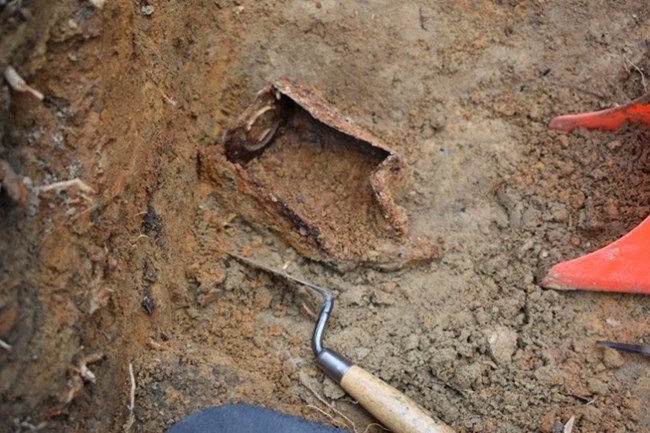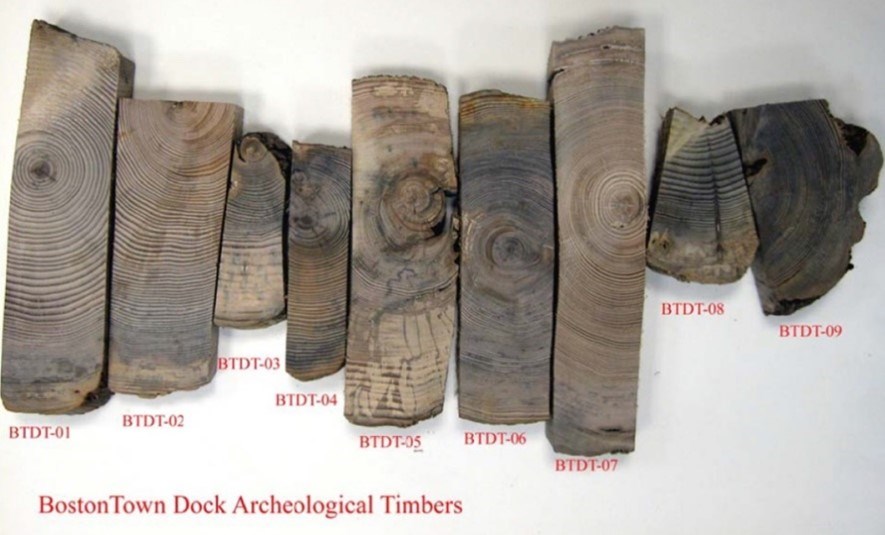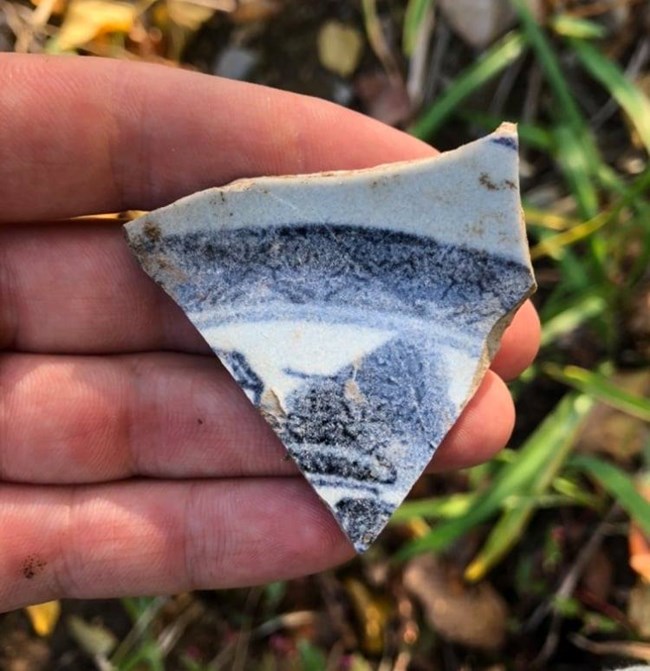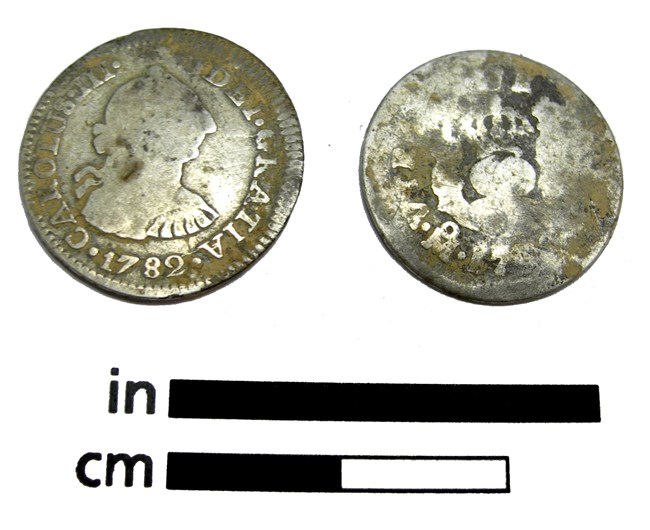Last updated: August 8, 2022
Article
How do Archeologists know how old a site is?

NPS Photo.
How do archeologists know how old a site is? When archeologists determine a date for a previously unknown archeological site, they rely on a wide variety of methods. To start, when archeologists talk about “dating” a site, what they really mean is they’re trying to determine when the site was occupied by people. A date range often, though not always, provides an approximate time that the site was first inhabited by people, to the time it was abandoned. When archeologists employ dating methods, they’re trying to tighten the range of time when the human activities associated with a site or sites actually occurred.
The outcome and “tightness” of that date range will vary greatly based on many factors, such as artifact quantities and site preservation. The older a site is, the more difficult it will be to get a narrow date range. How much material was left behind by the occupants? If there are more materials to analyze, determinations will be a lot more accurate! What is the level of preservation at the site? If materials are preserved, this can help with dating the occupation period. What type of site it is (I.e., permanent habitation/domestic site, seasonal/temporary occupation site, tool manufacturing/processing site, ceremonial site, etc. This is a very important question in understanding when and why a site was occupied and then no longer used.
For sites that are known to be associated with the colonial period or later, the best “dating method” per se is often a date estimated or verified from studying historical records. If conducting an archeological survey for example, archeologists can study historic maps to identify structures and research local records to compare dates of construction and/or ownership of said structures. When this works well, archeologists can know approximately where a structure was, when it was built, and who occupied it even if there is no longer any evidence of it on the surface. Of course, the historical record has imperfections, making it a rare occurrence for an archeologist to declare the date range of a site with 100% certainty
Absolute Dating
When other methods are needed to determine a date range, situation-specific dating methods performed with specialized equipment, simple calculations, or a combination of the two can be used. There are two “umbrella” methods here: absolute dating and relative dating. Let’s start with absolute dating! Analyzing in situ soils, archeological charcoal, or bones. Sometimes materials such as ceramics using highly specialized methods in a laboratory can help archeologists arrive at something called an “absolute” date for a site. Of course, an “absolute” date is absolute in name only. Once again, we’re talking about a date range! Absolute dates are called “absolute dates” because of the scientific nature of extracting the date range, not because the date extracted is perfect or 100% accurate.
One of the best-known methods of absolute dating is called radiocarbon dating. Radiocarbon dating (often written shorthand to C-14 dating) is a method for dating sites by analyzing the amount of Carbon-14 (a radioactive isotope of carbon) found in organic remains like charcoal or bones. Atmospheric C-14 radiation is absorbed by plants, which in turn is absorbed by animals that eat those plants. Hence why analysts can use charcoal or bones, to name just two organic materials! When a plant or animal dies, they stop absorbing C-14, and C-14 levels begin decaying. To get a radiocarbon date, a piece of charcoal or other once-living material is carefully removed from intact stratigraphy in a site, wrapped gently in appropriate and sterile materials, and sent to a lab for processing.
Chemists have approximately determined the rate of the radioactive decay of C-14 atoms and can measure this to arrive at an estimate of how old a site is based on when the organic material stopped absorbing C-14 when it was alive. This is “approximately” determined because calibrations are always needed, such as for solar radiation hitting Earth and atmospheric factors that have not always been constant and thus skew dates, but that’s an in-depth lesson that trained chemists could speak to more! Aside from radiocarbon dating, there are a whole host of other absolute dating methods, including optically stimulated luminescence (OSL), potassium-argon dating, thermoluminescence, amino acid dating, and many, many others. Not sounding like household words? That’s ok! A lot of these are highly specialized and difficult to understand even for experienced archeologists.
Radiocarbon dating is effective for samples up to 50,000 years old,but provides a margin of error in ± years. Archeologists understand deep time in terms of longer periods of cultural and environmental patterns and trends, so the ± swing is less vital for really old sites than if an archeologist is trying to interpret a site from the more recent past. If an archeologist wants to date a site 500 years old or younger, a margin of error of ± even a hundred years is not useful, so different dating methods must be used. There is a lot to radiocarbon dating and other absolute dating methods, much more than can be covered here. C-14 dating is definitely a method NARP archeologists use extensively – but it isn’t always needed to create a general timeline for a site!
Now, let’s talk about one of the more digestible absolute dating methods that NARP archeologists used at Boston’s Faneuil Hall. Many trees with a seasonal growth cycle grow in patterns. They have a dead “heartwood,” and living wood on the outside covered in bark. As the tree ages, more heartwood accumulates, and the tree slowly gets larger and taller. Trees that grow these ways often put out a ring, which many people know tells how long the tree lived. One ring = one growth cycle = one year, typically. If there are a lot of trees in an area of different ages, comparing the growth rings to one another is possible, and trends can be isolated, allowing researchers to use the data from some trees to reconstruct the growth patterns of other trees over time.
This process is called dendrochronology. If you’re in an area where dendrochronology is possible, if pieces of wood are preserved in an archeological site and a “master sequence” of tree ring dates stretch back far enough, a researcher can find out the exact date that that tree was cut down to the year. This has implications for dating historic buildings and other preserved wooden remains of a sufficient size. This is an incredibly detailed absolute date that is extremely rare archeologically in Region1 because of the circumstances that have to line up to make it possible such as the preservation of organic wood material which is not always common in the acidic soil of the northeast. However, in some regions of the world dendrochronologically-derived dates can stretch back 11,000 before present! Check out this photo of dendrochronologically dated samples taken from Faneuil Hall in Boston. These were found 8 feet below the surface and are the remains of hemlock trees dated to have been cut between A.D. 1710 and 1720.

Relative Dating
What is relative dating?
Put simply, relative dating is estimating the date range of a site using information from artifacts and features found in situ. When referring to something as being in situ, we’re stressing the importance of “context.” Context is the basic idea that good information and inferences only come from artifacts that have not been disturbed since being deposited.

How does this concept apply to archeological sites?
If an archeologist is trying to understand when a site was occupied and when it may have been abandoned, they can collect all the ceramics present and calculate their “mean ceramic date.” Historical archeologists have great records of when certain types of ceramics or ceramic decoration techniques & styles were popular and when they fell out of fashion or were not produced anymore. When an archeologist looks at an assemblage of all the ceramics at a site, they can calculate the “mean” date of production for the assemblage of ceramics as a whole to arrive at an estimate of the date a site was occupied.
Another technique that uses artifacts is seriation dating which is based on the fact that artifacts change over time. If they know around when an artifact style became popular and when it stopped being popular, they can develop what is known as a “battleship curve” date range that the artifact would have been commonly used. If they find that style of artifact at a site, they can use that date range to estimate how old the site is.

Though these examples are just a small slice of how archeologists date sites, we at NARP hope that they help provide some context for how we do what we do.
